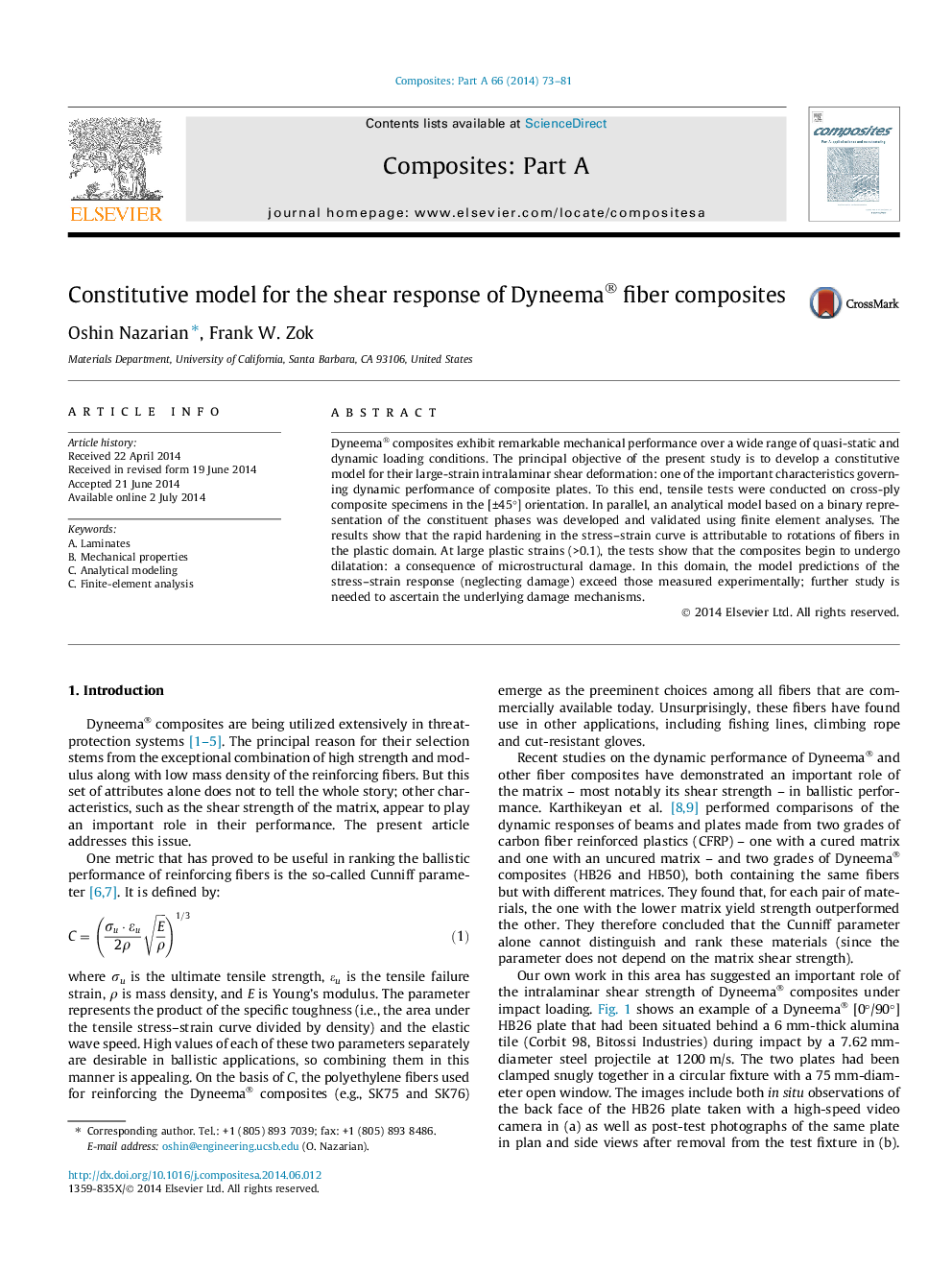| Article ID | Journal | Published Year | Pages | File Type |
|---|---|---|---|---|
| 1465954 | Composites Part A: Applied Science and Manufacturing | 2014 | 9 Pages |
Dyneema® composites exhibit remarkable mechanical performance over a wide range of quasi-static and dynamic loading conditions. The principal objective of the present study is to develop a constitutive model for their large-strain intralaminar shear deformation: one of the important characteristics governing dynamic performance of composite plates. To this end, tensile tests were conducted on cross-ply composite specimens in the [±45°] orientation. In parallel, an analytical model based on a binary representation of the constituent phases was developed and validated using finite element analyses. The results show that the rapid hardening in the stress–strain curve is attributable to rotations of fibers in the plastic domain. At large plastic strains (>0.1), the tests show that the composites begin to undergo dilatation: a consequence of microstructural damage. In this domain, the model predictions of the stress–strain response (neglecting damage) exceed those measured experimentally; further study is needed to ascertain the underlying damage mechanisms.
